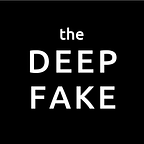Deception, Detection, and Forensics with Siwei Lyu
Episode #02
In this episode, we chat with Professor Siwei Lyu about media forensics, how AI makes detecting media forgeries more effective, and how to make sense of and address deepfakes on social media.
Siwei Lyu: “These days, on the internet, it’s very hard to find any photograph that is original without any manipulation…”
About Siwei
We are honored for the chance to speak with Professor Siwei Lyu, an award-winning computer scientist at the University at Buffalo, SUNY, whose research covers digital media forensics, computer vision, and machine learning. He is also the director of UBuffalo’s Media Forensic Lab, he has testified before Congress, and his research on media forensics and deepfake detection has been featured on PBS, Wired Magazine, Nature, DEFCON, and many many other publications.
[0:00–1:20] Introducing Professor Siweu Lyu and his research
[1:20–3:30] Before deepfakes, what was media forensics like?
Many different forms of forgery predate deepfakes, which media forensics specialists have studied since the 1990s:
- 1994 cover of TIME magazine depicting OJ Simpson with darkened skin
- Cheapfakes, forgeries and manipulated media that predate and are much more common than deepfakes
- Photoshop is widely used in advertisement, even in journalism. As a tool, it’s capable of retouching details to creating altogether new media
- On social media, many photographs (especially selfies) display evidence of “digital beautification”, which is also prevalent on dating app photos
[3:35–4:15] Manipulation is everywhere
“These days, on the internet, it’s very hard to find any photograph that is original without any manipulation…”
Manipulation is everywhere on the internet. But not all manipulation is necessarily bad: people often use Photoshop and editing software for fixing imperfection and hiding ugly details. But malicious intent makes manipulation a problem.
[4:15–7:45] Detecting manipulation with AI
When the human eye cannot perceive media manipulation, various algorithms and methods can detect anomalies and alterations to media with signals processing:
Computer vision algorithms and AI are essential and both efficient and accurate for detecting image forgeries and media manipulation.
[7:48–13:13] Training ourselves to detect manipulation
“Technical measures will still be very effective…”
- Hillary Clinton removed from the White House Situation Room photo
- Train yourself to zoom into and inspect images before sharing online
- International standards committee for JPEG, the most common image compression format, added “fake media” to its standards in 2020
“The next generation of JPEG compressed images will carry some mechanism so that it’s easier to remind the user, remind the viewer that this image potentially may undergo some manipulation.”
Other technical measures include
- Reviewing metadata, provided it’s not removed
- Embedding fingerprints and watermarks into the image’s signal to uniquely identify that media
- Using metadata and fingerprints for automatic tracking when a camera took the photo and where the image has spread online (to track potential manipulation)
“Any of this counter-technology will not benefit us unless the platform companies are willing to adopt them”
[13:14–21:20] Deepfake forensics
Large tech companies already have infrastructure for content filtering, especially offensive or abusive material, so fake media can be another type of filtered content
“The real problem is, how do we trust the detection algorithms: they are not perfect… [So we will] need to implement a cascade of different kinds of filters, different kinds of detectors to actually catch all media forgeries.”
A few problems exist with detection algorithms:
- False positives: when real, truthful media is mistakenly tagged as “fake”
- “Needle in a haystack”: deepfakes are in the minority of online media
- Sampling: data collected in research lab settings does not necessarily reflect the reality of media forgeries, so the detection model’s performance drops when applied to a real life setting
“If you read research papers, you see the detection performance are very very promising… sometimes they’re in the range of 90, 95 percent accuracy, but this is not reality, so I think we need to be sober about what the algorithms can provide for us…”
Should we tag every detectable deepfake video?
“There is an interesting social psychological phenomenon: when fake media’s tagged as fake, it doesn’t stop or slow down the rate of propagation. Actually it draws people’s attention: [the tag] raises the curiosity of the viewer to see, if this is a fake, I want to see how fake it is.”
Context and explanation are also important measures:
- Like Twitter’s system, a fact-checking mechanism should link media with tags, sources, and counter-facts for platform- and user-level validation
[21:21–26:00] Why deepfakes haven’t taken over the internet
Since 2017, early warnings from the media helped to curb the spread of deepfakes.
- The US Congress has held several hearings on topic of deepfakes
- Big Tech and social media companies are taking deepfakes seriously
So warnings have drawn a lot of attention towards deepfakes:
“Someone who wants to make a deepfake is suddenly in the spotlight. If they don’t want to raise too much attention on themselves, deepfake becomes a liability instead of asset.”
Cost is another reason. While it’s easier to make a deepfake today than it was twenty years ago, there exist technical barriers to creating believable deepfakes, including access to (expensive) computing power:
“To actually make a good quality deepfake, that is difficult for people to tell apart from a real one, it’s still not easy. It requires a certain amount of technical skills and some experience. Even though I say, everyone can do it in principle, not everyone can make it right.”
The technology will keep evolving, and so will the thresholds for detection. The early alarms in 2017 following Buzzfeed’s Peele-Obama deepfake ultimately changed the development of online fake media.
Thanks for tuning in!
You can find us on Twitter @AudioDeepfake, and you can listen to more episodes on our website: www.deepfakepodcast.ml
